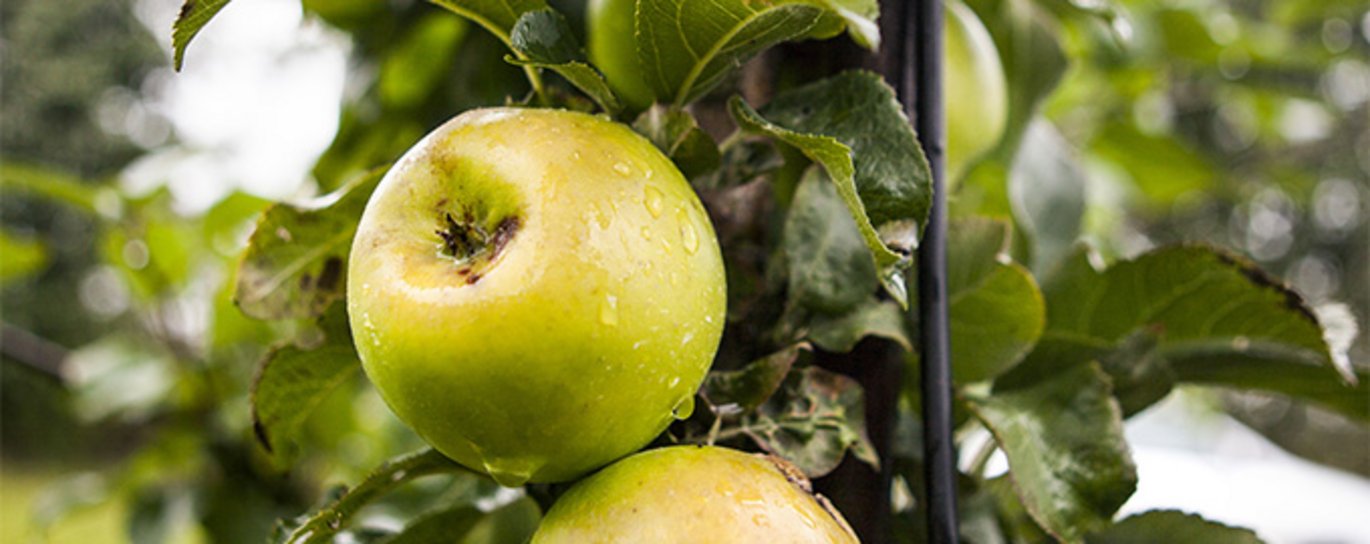Reduced spraying of apples is possible
The number of sprays in apple orchards can be significantly reduced if spraying is optimized between early spring and fruit set.

Consumers are concerned about pesticide residues in fruit and vegetables. A previous research project at Department of Food Science, Aarhus University, has shown that the number of sprays in apple orchards can be significantly reduced if spraying is optimized between early spring and fruit set.
This avoids spraying on the fruit itself, so there are no pesticide residues on the actual apple. Three growers tested this new spraying strategy, by growing ‘Aroma’ apples and a cultivar of own choice as a comparison. They was done as part of the project DAFRUS, which is funded by the Ministry of Food and the Environment’s Green Development and Demonstration Programme (GUDP).
Project Leader, Senior Researcher at Department of Food Science, Marianne Bertelsen, says:
- The results have exceeded all expectations. The growers have completely avoided apple scab, and by using this new spraying strategy they have reduced the number of applications by six sprays and have produced 90% apples free of pesticide residues.
Even though it is possible to reduce spraying, there are challenges: the individual grower is at greater risk and the incentive is small because the effort is “invisible” to the consumers.
- The growers compete with organic products, but, in contrast to the organic producers, they don’t have a sticker to label it and therefore there is no premium for the effort, says Marianne Bertelsen.
Rots remain a challenge
Regarding the occurrence of storage rots, the situation is less clear when the new spraying strategy is introduced and the results vary between years and orchards. Part of the project is therefore to develop warning systems.
- We study if there are any indicators of rot before it is visible on the apples. In the future, it might be possible to take air samples in the storage rooms and analyze them for volatiles that are early indicators of rot. However, we still do not know much about the causality for rot. However, we know that apples are often infected in the period right before harvest, says Marianne Bertelsen.
Further information
The project DAFRUS has been granted 4.8 million DKK from the Ministry of Food and the Environment’s Green Development and Demonstration Programme (GUDP).
Participants include: Aarhus University, GartneriRådgivningen (HortiAdvice Scandinavia), Fejø Fruit, Snaptun Fruit Plantation and Lolk's Fruit Plantation.
Read more about the project (in Danish)
Contact
Senior researcher Marianne Bertelsen
Department of Food Science, AU
Mail: marianne.bertelsen@food.au.dk
Phone: 8715 8328
